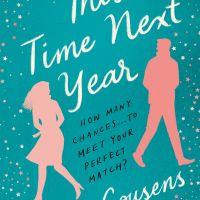Early in September, I found out about a newly translated book that was just published in English, The Mad Women’s Ball by Victoria Mas. Already out in French for two years, the book has even been adapted into a film. The premise of it piqued my interest, and I’m always excited to read translations, so this catapulted to the top of my to-read list.
| The Mad Women’s Ball by Victoria Mas | |
|---|---|
| Translator | Frank Wynne |
| Audience | Adult |
| Genre | Historical Thriller |
| Setting | Paris, France |
| Number of Pages | 211 |
| Format I Read | Hardcover |
| Original Publication Date | August 21, 2019; English Translation: September 7, 2021 |
Official Summary
A literary historical novel detailing the horrors faced by institutionalized women in 19th century Paris—soon to be a major film with Amazon Studios
The Salpêtrière Asylum: Paris, 1885. Dr. Charcot holds all of Paris in thrall with his displays of hypnotism on women who have been deemed mad and cast out from society. But the truth is much more complicated—these women are often simply inconvenient, unwanted wives, those who have lost something precious, wayward daughters, or girls born from adulterous relationships. For Parisian society, the highlight of the year is the Lenten ball—the Madwomen’s Ball—when the great and good come to gawk at the patients of the Salpêtrière dressed up in their finery for one night only. For the women themselves, it is a rare moment of hope.
Geneviève is a senior nurse. After the childhood death of her sister Blandine, she shunned religion and placed her faith in both the celebrated psychiatrist Dr. Charcot and science. But everything begins to change when she meets Eugénie—the 19-year-old daughter of a bourgeois family that has locked her away in the asylum. Because Eugénie has a secret: she sees spirits. Inspired by the scandalous, banned work that all of Paris is talking about, The Book of Spirits, Eugénie is determined to escape from the asylum—and the bonds of her gender—and seek out those who will believe in her. And for that she will need Geneviève’s help . . .
Review
The Mad Women’s Ball is a slim novel, just over 200 pages, and it maintains a spare writing style. Even so, Victoria Mas packs a lot in, making for a book that is illuminating and thought-provoking. It doesn’t necessarily provide answers, and it doesn’t over-indulge readers with anything extra; our imaginations are left to fill in the blanks. But it does make an impact with what is there. Throughout the novel, there are numerous quotable passages that will make you pause and ponder it, and perhaps reread it once or twice. This is a book that’s worth reading at least once, and for me, it will likely become something I revisit periodically.
When The Mad Women’s Ball opens, it’s March 1885, just weeks before the Salpêtrière Asylum will hold its annual ball. Geneviève is a senior nurse – not exactly a comforting presence for the women there, but a reliable and professional woman who cares about doing her job well. She oversees many of the women, including the naive and dreamy Louise, only sixteen years old. After setting up the environment and the conditions the women there face – as well as why so many women end up there, often unfairly – the time shifts back by just a couple weeks to meet Eugénie. She’s a smart and outspoken young woman who happens to see dead people – spirits, as she calls them. After keeping this secret for years, it’s found out, and she’s immediately sent to the Salpêtrière.
Much of what we see in the Salpêtrière is women who have been discarded, by society or their own families, in an institution that claims to help and heal women. However, is Dr. Charcot truly helping them, or simply experimenting on them in order to make scientific discoveries and advancements? While many women there do have physical, neurological, or mental illnesses – like depression and PTSD and epilepsy – many others are women who dared speak up with their own opinions, or faced some kind of misfortune or violation, or simply led a difficult life. Some women were cheated on, some were raped, some were living in the streets. But nearly all who end up at the Salpêtrière never get to leave. For some that’s better than the alternative of being homeless, but for others it’s like a prison.
One theme that stands out is how cruel and domineering men can be. Indeed, most of the women are in the Salpêtrière because a man put them there. Most often, it’s her father or husband. Even someone as composed and intelligent as Geneviève can, with just one wrong move, suddenly find herself being sent to the asylum. This novel shows how quickly a man will turn on a woman and, without batting an eye, send her to the Salpêtrière for the rest of her days.
It’s a feminist narrative, to be sure. Eugénie is perhaps the most ahead of her time, wanting women to have the same opportunities men have to learn and share ideas and grow as individuals. However, Geneviève also sees how little women are valued, even in the professional space. As she observes, men always think they know more than women. They also have all the power. The Mad Women’s Ball shows the staggering inequality between men and women, and if that doesn’t inspire a bit of feminist rage, I don’t know what will.
Another interesting theme is the double standard between accepted religious belief (specifically, Christianity) and other beliefs. As Eugénie points out after arriving at the Salpêtrière, a woman seeing the Virgin Mary at Lourdes is acceptable, but her seeing spirits is not. Why? Why is it acceptable to believe in God but not in spirits? This novel has some atheist overtones, which I quite enjoyed.
It also really does call into question who’s considered “mad” and who’s seen as sane. Once the ball finally does happen, it’s clear how composed the asylum women are, and yet the wealthy, elite guests act more “mad,” more unpredictable and reactive. It shows, again, how madness is all about perception and willingness to understand people. We need more flexibility with what is considered acceptable behavior, and we need better treatment for those who do need it.
Beyond the overarching themes, the novel offers some quiet but important character growth, especially in Geneviève. Though not a patient, her story seems to be the most compelling and dynamic here. The Mad Women’s Ball slowly escalates until a thrilling, heart-breaking final chapter and epilogue. Other characters evolve in their own ways, but Geneviève’s transformation is the most complete from start to end.
Final Thoughts
The Mad Women’s Ball is a quick read, and it’s subtle, but it leaves a strong impact. It affirms the need for gender equality and for proper health care for people with mental illnesses or traumas. It shows us how important empathy and trust are. We’ve come a long way since 1885, thankfully, yet these themes still ring true today, proving that we still have progress to make. This is a wonderful debut novel – and an excellent translation – and I look forward to reading more from Victoria Mas.
P.S. I also watched the film adaptation immediately after finishing the novel. It’s a great movie, though there are numerous changes to the plot and details. Even so, it’s an enjoyable companion to the book that offers a different, but still illuminating, narrative.
About the Author

Victoria Mas was born in 1987. The Mad Women’s Ball, her first novel, has won several prizes in France (including the Prix Stanislas and Prix Renaudot des Lycéens) and been hailed as the bestselling debut of the season. She has worked in film in the United States, where she lived for eight years. She graduated from the Sorbonne University in Contemporary Literature.
More Historical Thrillers & Dramas
The Angel’s Game
I’m currently in the midst of reading Carlos Ruiz Zafón’s Cemetery of Forgotten Books series. Following my reread of his beloved The Shadow of the…
Chasing the Sun
Six years ago, I was living in Lima, Peru with my fiancé (now husband). He’s Peruvian, and in addition to spending nearly a year living…
The Glass Woman
Continuing in my reading journey through history, and following two books set in the early 1600s (The Familiars and The Mercies), my next book took…
The Devil Aspect
A few weeks ago, I stumbled across The Devil Aspect by Craig Russell on a display shelf at a book store. It’s one of those…
The Wonder
For a few months, I kept eyeing Emma Donoghue’s novel The Wonder every time I went to a book store, and I finally bought it…
Velvet Was the Night
I think I’m officially a Silvia Moreno-Garcia fan. I’ve read, and loved, three of her books: Gods of Jade and Shadow in 2019, Mexican Gothic…
Discover more from Amanda's Book Corner
Subscribe to get the latest posts to your email.








